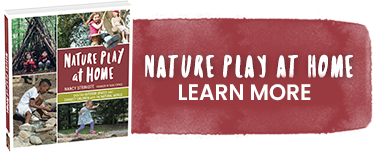Here is the story of a natural building project I love…
If you aren’t familiar with natural building, it is, basically, using natural, non-manufactured materials to create soul-soothing, sculptural structures. My favorite is earth-building, which uses in various combinations, a mixture of clay, water and sand, along with a fibrous material (grass, straw or wood fibers) for tensile strength. A method called “Cob” combines clay, sand and straw and builds with wet bricks called cobs because they are about the size of a cob or loaf of bread.
I discovered cob about 7 years ago and tried increasingly ambitious projects (first birdhouses, then a garden wall) before diving into a natural building project that was a pretty life-changing experience for me and for Sandra Redmore. Sandra is the director of the Clarendon Child Care Center, home of the sweetest pair of playhouses you can imagine.
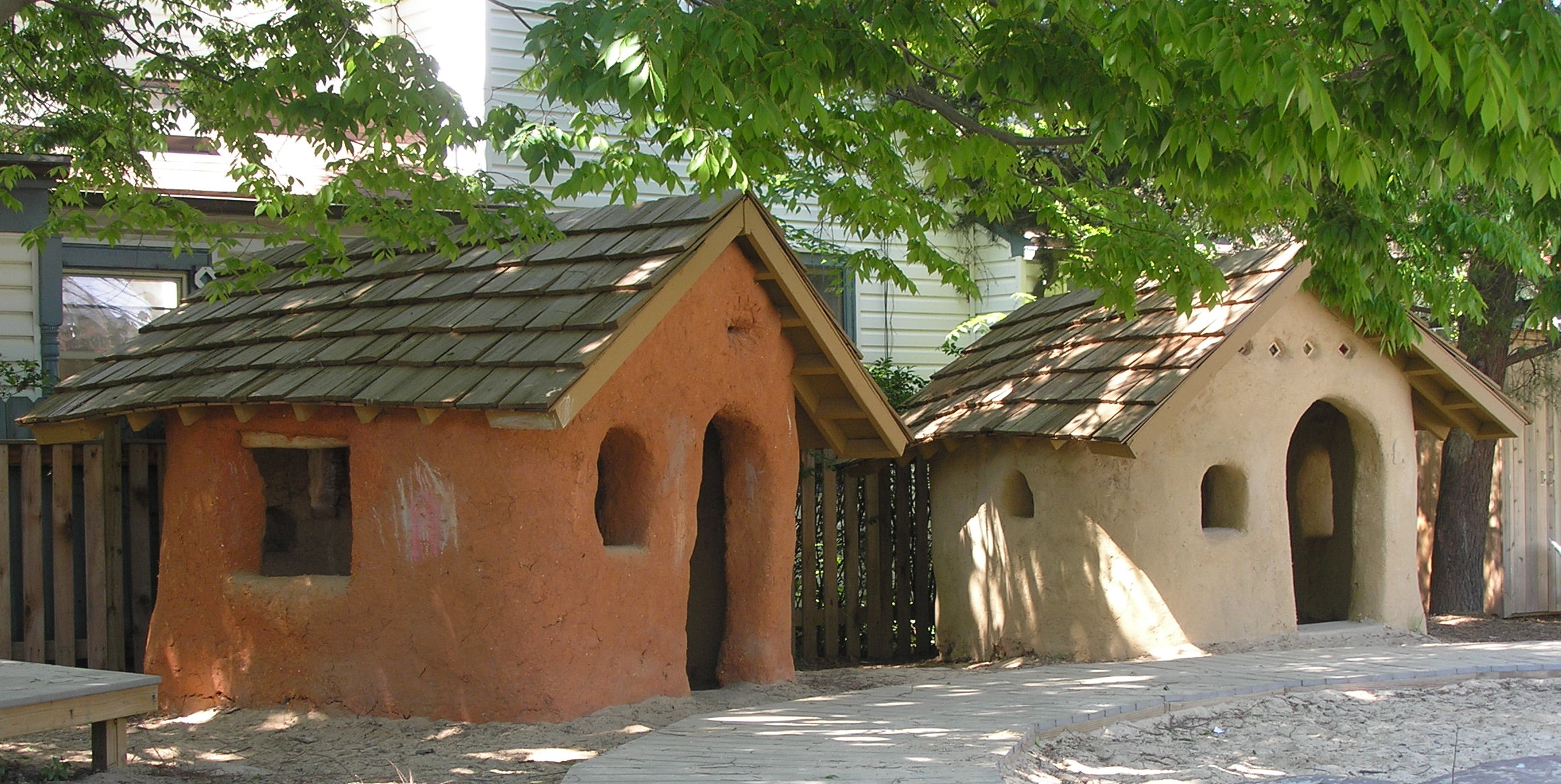
One of the coolest things about natural building is that it can be done using no power tools and for very little cost which makes it perfect for natural playspaces. It takes time though. Sandra and I spent countless hours that year, from early April till late in the fall, almost every weekend, organizing dozens of generous volunteers and participating in workdays to get these little houses built. By that cold fall we had built the playhouses and also a friendship of the deep sort that comes from hours spent together, toes in the mud.
Yes, toes in the mud! Another cool thing about natural building is that the traditional way to mix that clay, sand and straw is with bare feet. And what could be more perfect when building with children?

Cob is incredibly durable and long lasting as long as it has what cobbers call “dry feet and a dry head” which means a good foundation that keeps the cob off the ground and a solid roof with good overhangs. There are cob houses in Great Britain, where the technique originated, that are more than 500 years old. It does need occasional repairs though, such as when a crack develops and little fingers start to chip away at the cob. But that’s a good thing because the community that develops around a natural building project like the one Sandra and I embarked on is rare and special. Patching the playhouses (as we did a few weeks ago) is an opportunity for the children (and teachers and families) who come after the project is done, to understand where the houses came from and to get their toes in that magical mud!
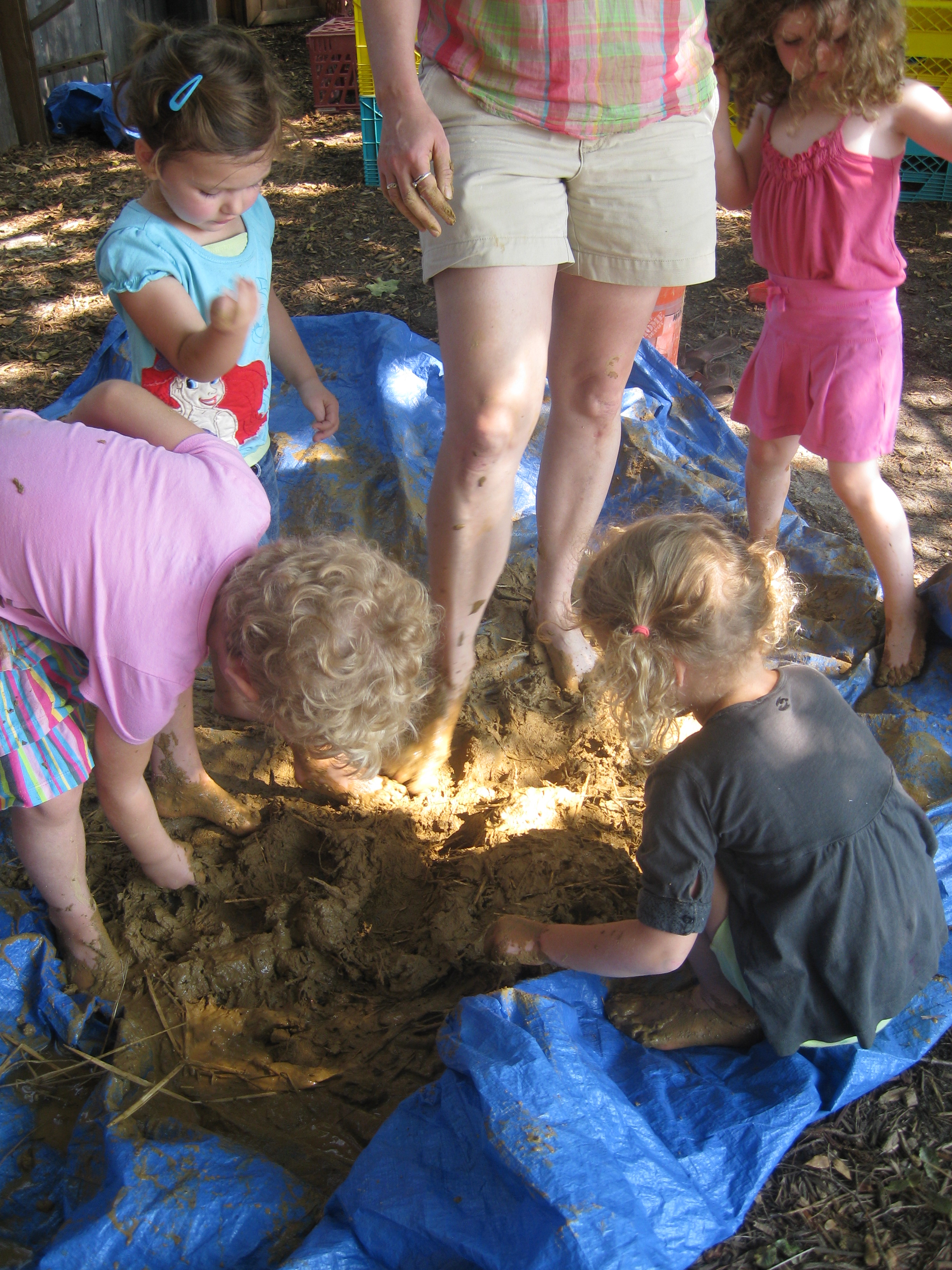
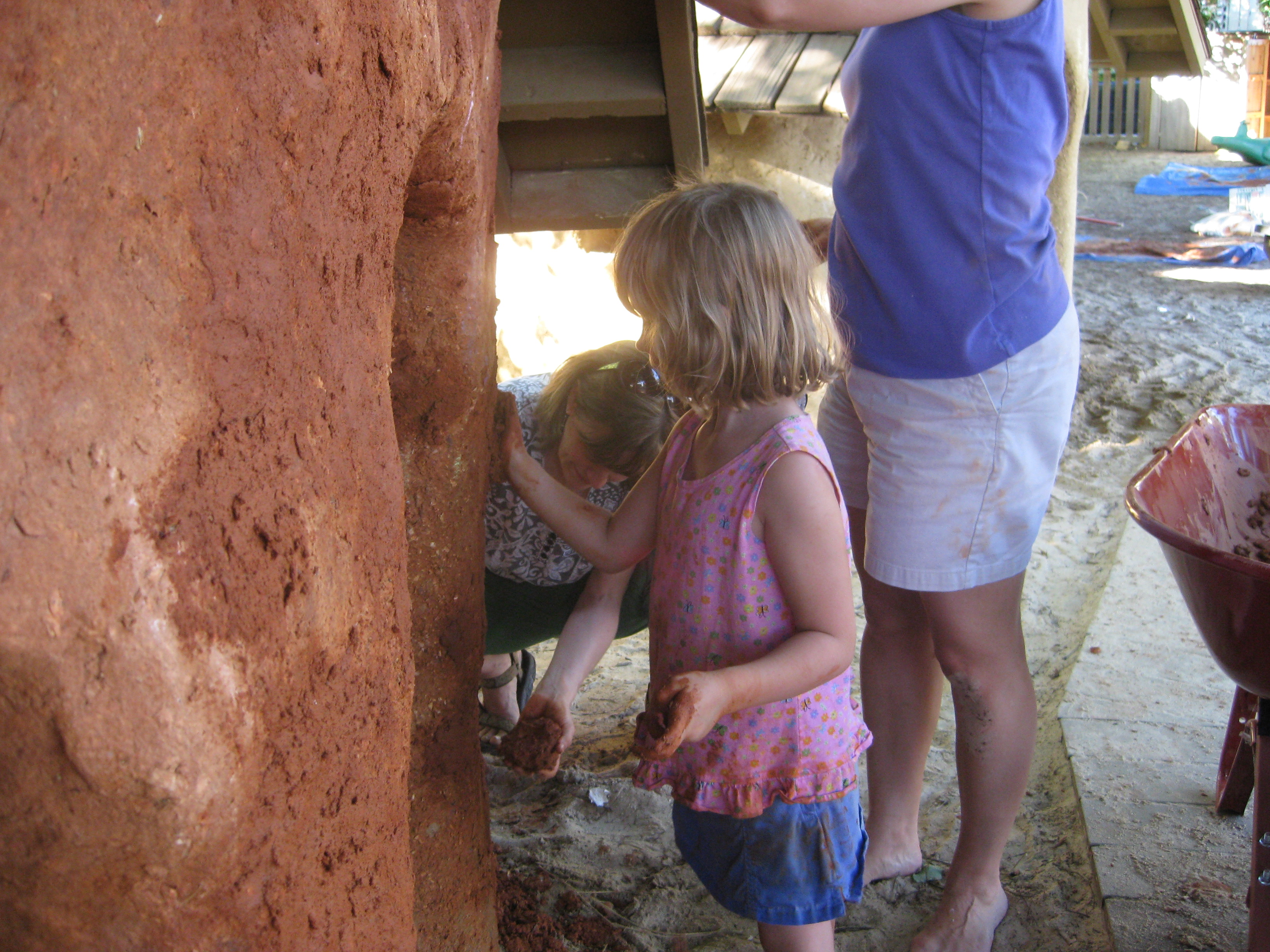
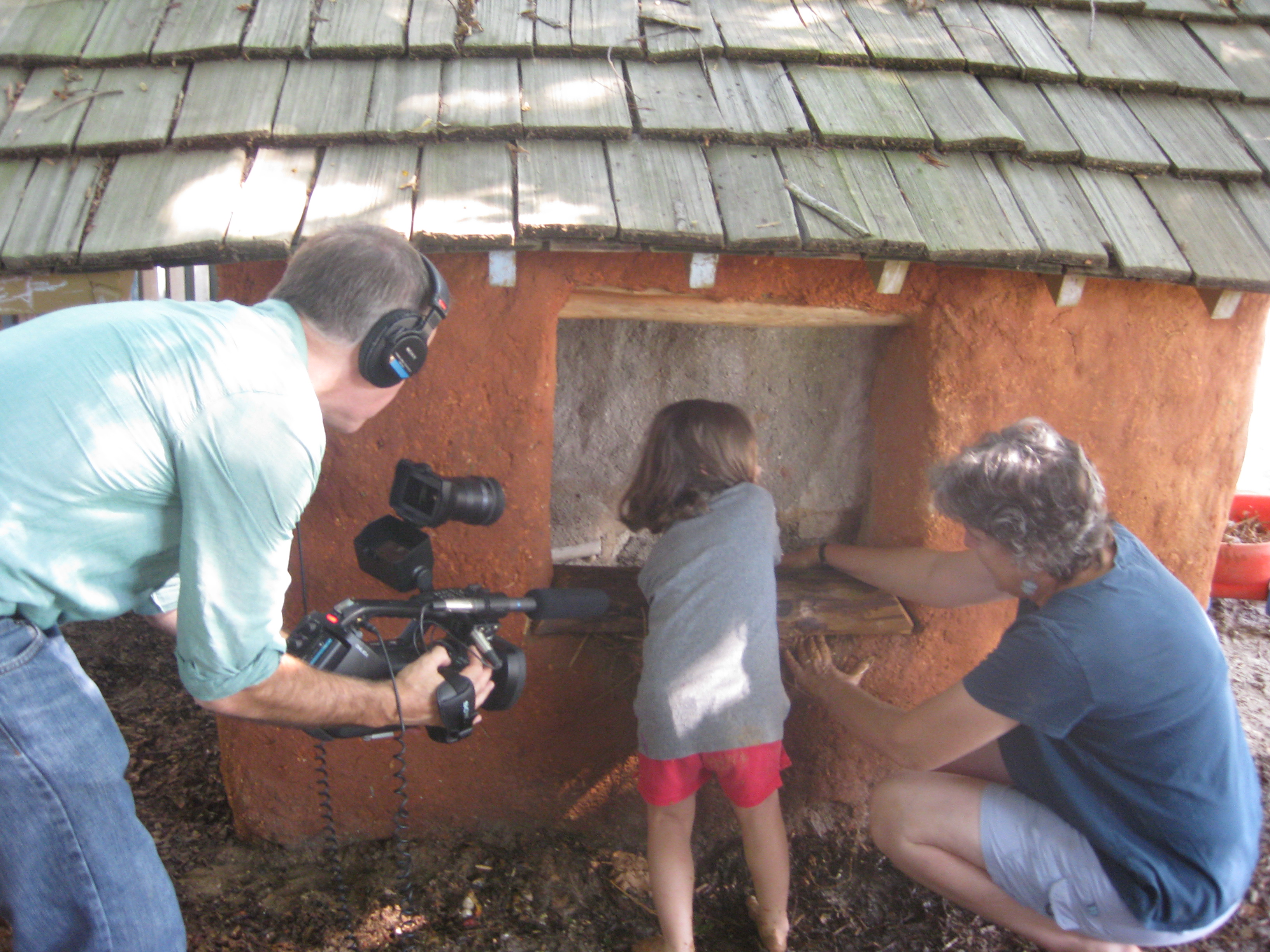
There are lots of great books on cob and natural building. Here are a few of my favorites:

